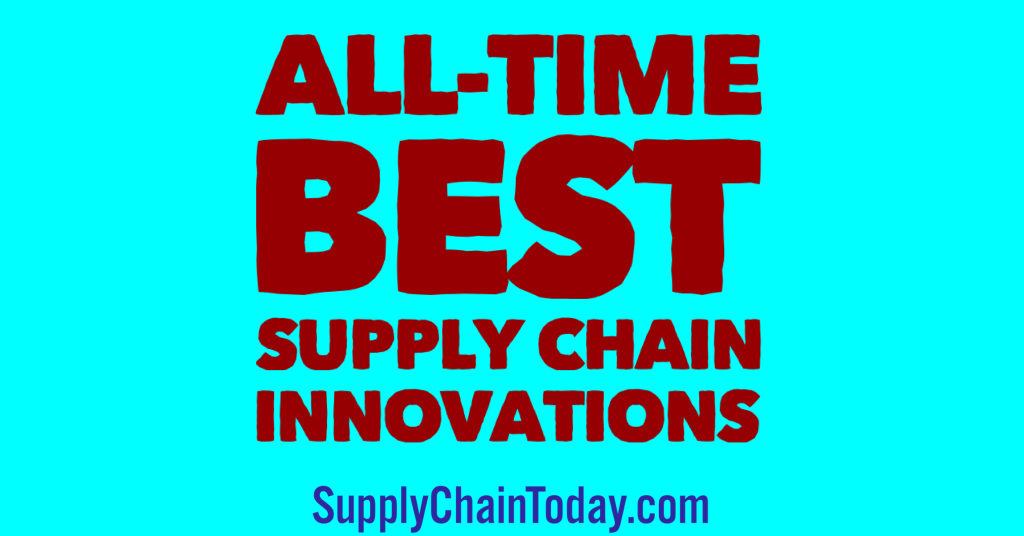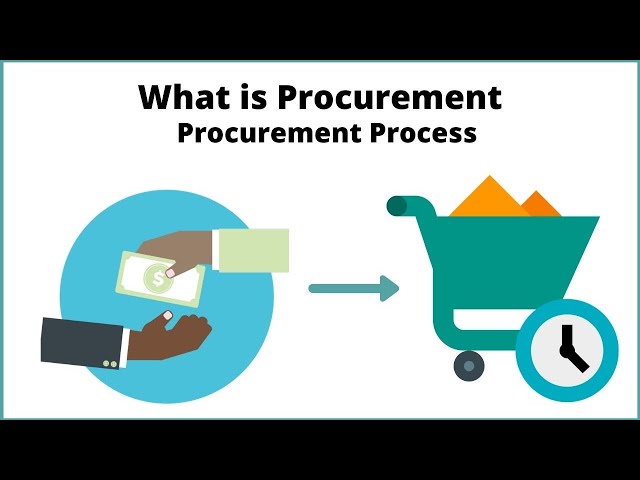All-Time Best Supply Chain Innovations.
Below you will find some of the best supply chain innovations of all time. These innovations have had a significant impact on supply chains, making them more efficient, productive, and responsive. This has led to lower costs, faster delivery times, and better customer service for consumers and businesses alike.
Shipping Containers (1956)
Shipping containers revolutionized the global transportation industry by making it possible to transport large quantities of goods more efficiently and cost-effectively. The introduction of standardized shipping containers in 1956 marked a significant revolution in the global transportation and logistics industry. This innovation, primarily associated with Malcom McLean, transformed the way goods were transported, loaded, and unloaded, leading to more efficient and cost-effective global trade. Here are the details on the revolution brought about by shipping containers:
- Standardization: Prior to the widespread use of shipping containers, goods were loaded and transported in various types of packaging, such as boxes, crates, and barrels. This lack of standardization made handling and transferring cargo a labor-intensive and time-consuming process. The introduction of standardized containers provided a consistent and uniform way to pack and transport goods.
- Intermodal Transportation: One of the key advantages of shipping containers is their ability to seamlessly transition between different modes of transportation, such as ships, trucks, and trains. The standard size and design of containers made it easy to transfer them from one form of transport to another without the need to unpack and repack the goods.
- Efficiency and Speed: Loading and unloading cargo from ships used to take a significant amount of time and labor. With the use of containerization, this process became much more efficient. Containers could be easily moved with cranes and other equipment, reducing labor costs and speeding up the process. This efficiency resulted in faster turnarounds at ports and increased the capacity of shipping vessels.
- Reduction in Damage and Loss: Standardized containers are designed to protect goods from damage and theft during transportation. With traditional methods, goods were more susceptible to damage and pilferage. Containers provided a secure and sealed environment, reducing losses and damage during transit.
- Cost Savings: Containerization significantly reduced labor costs associated with handling and transporting cargo. It also reduced the time required for loading and unloading, resulting in cost savings for shipping companies and their customers.
- Global Trade Expansion: The ease of transporting goods via standardized containers led to a substantial increase in global trade. Companies could now efficiently move goods across continents, making international trade more accessible and affordable.
- Port Development: The shift to containerization prompted the development and expansion of container terminals and ports around the world. Ports had to adapt to accommodate the efficient handling of containers, and this investment in infrastructure further facilitated global trade.
- Supply Chain Management: The use of containers and the standardization of cargo handling led to advances in supply chain management. Companies could better track their goods in transit and optimize the flow of goods from the manufacturer to the end consumer.
- Environmental Impact: While containerization improved the efficiency of transportation, it also had environmental consequences, such as increased emissions from the growth of container shipping. However, the industry has been working on more sustainable practices and cleaner technologies to mitigate its environmental impact.
Barcodes (1960s)
The introduction of barcodes in the 1960s revolutionized supply chain management and retail operations by providing a standardized and efficient way to identify and track products. Here are the key details on how barcodes have transformed the supply chain:
- Invention and Adoption: The modern barcode system was invented by Norman Joseph Woodland and Bernard Silver in the late 1940s, but it was not until the 1960s that barcodes began to gain widespread adoption. The first live test of the barcode system occurred in 1966 when barcoded items were used in a Kroger grocery store in Cincinnati, Ohio.
- Standardization: Barcodes introduced a standardized way to represent data in a visual format. The most common barcode standard is the Universal Product Code (UPC), which is widely used in retail for product identification. This standardization enabled easy recognition and tracking of products across different industries and businesses.
- Data Encoding: Barcodes encode information, such as product numbers, pricing, and other data, in a format that can be quickly and accurately scanned and interpreted by a barcode scanner. This eliminated the need for manual data entry, reducing human errors and increasing efficiency.
- Improved Inventory Management: Barcodes revolutionized inventory management by allowing businesses to track the movement of products in real-time. Retailers and manufacturers could easily monitor stock levels, track sales, and reorder products as needed, thereby reducing overstocking and understocking issues.
- Faster Checkout Process: In retail, barcodes significantly expedited the checkout process. Cashiers could simply scan the barcode on products, and the system would automatically update pricing and inventory records. This led to shorter lines and improved customer satisfaction.
- Traceability and Quality Control: Barcodes made it easier to trace the origin and production history of products. This was particularly valuable in industries with strict quality control requirements, such as pharmaceuticals and food. In case of recalls or quality issues, products could be quickly identified and removed from circulation.
- Supply Chain Visibility: Barcodes are integral to supply chain visibility. They allow for tracking the movement of products from manufacturers to distribution centers and ultimately to retail stores. This visibility enables better planning, faster response to disruptions, and improved coordination between different supply chain partners.
- Cost Savings: Barcodes reduced the labor costs associated with manual data entry and inventory tracking. They also minimized the chances of errors, which could be costly in terms of restocking, customer complaints, and lost sales.
- Integration with Technology: Barcodes became a foundation for further technological advancements, such as the development of inventory management software, Electronic Data Interchange (EDI), and later, the integration of barcodes with more advanced tracking systems like Radio-Frequency Identification (RFID).
- Global Adoption: Barcodes are now used worldwide and have expanded beyond retail to various industries, including healthcare, manufacturing, logistics, and more.
Enterprise Resource Planning (ERP) (1970s)
Enterprise Resource Planning (ERP) systems, which gained prominence in the 1990s, had a significant impact on the way businesses managed their supply chains. These integrated software solutions revolutionized supply chain operations by providing a unified platform for managing various aspects of the supply chain. Here are the key details on how ERP systems changed supply chains:
- Integration of Business Functions: ERP systems brought together various business functions, including finance, human resources, manufacturing, procurement, and inventory management, into a single, cohesive platform. This integration allowed for a holistic view of the entire supply chain and streamlined operations.
- Centralized Data Management: ERP systems created a central repository for data, making it easier for supply chain managers to access and analyze information related to inventory levels, orders, shipments, and supplier performance. This centralized data improved decision-making and responsiveness.
- Real-Time Visibility: ERP systems provided real-time visibility into supply chain operations. Managers could monitor the status of orders, track shipments, and assess inventory levels instantaneously. This enhanced visibility allowed for better demand forecasting and inventory management.
- Demand Forecasting: ERP systems included features for demand forecasting, enabling businesses to make more accurate predictions about future demand for their products. This, in turn, helped optimize production and inventory levels.
- Inventory Management: With ERP systems, businesses could optimize their inventory management by setting reorder points, tracking stock levels, and automating reorder processes. This reduced carrying costs, minimized stockouts, and improved inventory turnover.
- Supplier Relationship Management: ERP systems included modules for managing supplier relationships. This allowed businesses to assess supplier performance, negotiate better terms, and build collaborative relationships with key suppliers.
- Improved Efficiency: Automation of supply chain processes within ERP systems reduced manual data entry and eliminated redundant tasks. This efficiency improvement translated into cost savings and faster response times.
- Streamlined Procurement: ERP systems simplified the procurement process by automating purchase orders, approvals, and supplier communications. This streamlined procurement led to better cost control and more efficient sourcing.
- Order Fulfillment: ERP systems helped optimize order fulfillment processes by automating order processing, order picking, and shipping. This improved accuracy and speed of order delivery.
- Scalability: ERP systems were designed to accommodate the growth of businesses. As companies expanded, the ERP system could scale to meet the increasing demands of the supply chain without the need for significant overhauls.
- Regulatory Compliance: ERP systems often included features to ensure regulatory compliance in various industries. This was particularly important in supply chains with strict regulations, such as pharmaceuticals and food.
- Data Analytics: ERP systems facilitated data analytics by providing tools to analyze historical data and identify trends and opportunities for improvement within the supply chain.
Just-in-Time (JIT) Manufacturing (1970s)
Just-In-Time (JIT) systems, which originated in the 1970s in Japan, have had a profound impact on the evolution of supply chain management. JIT is a production and inventory management strategy that aims to minimize waste by producing or delivering only what is needed, when it is needed. Here are the key details on how JIT systems have changed supply chains:
- Origin in Japan: JIT systems were developed and popularized by Japanese manufacturing companies, most notably Toyota. The concept emerged as a response to the need for efficient production and inventory management in a resource-constrained post-World War II Japan.
- Toyota Production System (TPS): JIT is often closely associated with the Toyota Production System (TPS), which was developed in the 1950s and 1960s. TPS served as the blueprint for JIT and emphasized key principles such as minimizing waste (Muda), continuous improvement (Kaizen), and respect for people.
- Reduced Inventory: One of the primary objectives of JIT is to minimize inventory levels. This change was a departure from traditional supply chain practices, where businesses tended to maintain large stockpiles of raw materials and finished goods.
- Demand-Driven: JIT systems focus on aligning production and inventory levels with actual customer demand. This means producing and delivering products only as needed, thereby reducing the risk of overproduction and underutilization of resources.
- Efficient Production: JIT emphasizes efficient production processes and the elimination of waste. It encourages lean manufacturing by identifying and eliminating non-value-adding activities and processes.
- Pull System: JIT systems operate on a “pull” principle, where production is initiated in response to customer demand. This is in contrast to a “push” system, where goods are produced based on forecasts or production schedules.
- Shorter Lead Times: JIT emphasizes reducing lead times throughout the supply chain. This helps products move more quickly from suppliers to manufacturers to customers, improving responsiveness to changes in demand.
- Supplier Collaboration: JIT relies heavily on close collaboration with suppliers. Suppliers are expected to deliver materials and components just in time, reducing the need for extensive inventory at the manufacturer’s end. This collaboration often results in stronger supplier relationships.
- Kanban System: The Kanban system is a visual signaling method used in JIT to manage the flow of materials and production. Kanban cards or signals are used to indicate when materials should be replenished or when production should be initiated.
- Quality Control: JIT places a strong emphasis on quality control. Defects are identified and corrected quickly, reducing the chances of defective products reaching the customer. The focus on quality extends to all aspects of the supply chain.
- Cost Reduction: JIT systems can lead to cost savings by reducing the costs associated with holding inventory, improving production efficiency, and minimizing waste.
- Global Adoption: Over the years, JIT principles have been adopted by companies worldwide, not just in manufacturing but also in other industries, including services and healthcare.
- Continuous Improvement: JIT systems prioritize continuous improvement (Kaizen). Companies using JIT regularly review and refine their processes to identify and eliminate inefficiencies.
Lean Manufacturing (1980s)
Lean manufacturing, which gained prominence in the 1980s, revolutionized supply chain and manufacturing processes by introducing a systematic approach to reducing waste, improving efficiency, and enhancing overall productivity. Here are the key details on how lean manufacturing has transformed the supply chain and manufacturing industries:
- Origin: Lean manufacturing originated in Japan and is often associated with the Toyota Production System (TPS). TPS was developed in the mid-20th century but gained significant attention in the 1980s as it was studied and adapted by manufacturers worldwide.
- Waste Reduction: A fundamental principle of lean manufacturing is the relentless pursuit of waste reduction. This includes identifying and eliminating various types of waste, such as overproduction, excess inventory, waiting times, transportation, defects, and underutilized employee skills (often referred to as the 8 wastes).
- Just-In-Time (JIT): Lean manufacturing incorporates the JIT concept, which involves producing and delivering products only as needed. This reduces inventory levels, minimizes carrying costs, and aligns production with actual customer demand.
- Continuous Improvement (Kaizen): Kaizen is a core component of lean manufacturing, emphasizing a culture of continuous improvement. Companies regularly encourage employees to identify and address problems and inefficiencies in the production process.
- Pull System: Lean manufacturing operates on a “pull” system, where production is initiated based on customer demand rather than a predetermined production schedule. This eliminates the overproduction often seen in traditional manufacturing.
- Value Stream Mapping: Value stream mapping is a tool used in lean manufacturing to analyze the entire production process, from raw materials to the end customer. It identifies non-value-adding steps and helps optimize the value stream.
- Standardized Work: Standardizing work procedures ensures consistency and quality in manufacturing processes. By reducing variability, companies can achieve higher efficiency and lower defect rates.
- 5S: The 5S methodology is a lean tool that focuses on workplace organization and cleanliness. The five “S”s stand for Sort, Set in order, Shine, Standardize, and Sustain. These principles help create a well-organized and efficient workplace.
- Employee Involvement: Lean manufacturing encourages active participation and input from employees at all levels. Workers are empowered to make decisions, suggest improvements, and take ownership of their work processes.
- Supplier Collaboration: Lean manufacturing extends beyond the factory floor to include suppliers and other partners in the supply chain. Collaborative relationships with suppliers help streamline the flow of materials and information.
- Lean Six Sigma: Many organizations combine lean principles with Six Sigma methodology, which focuses on reducing defects and variations in processes. This combination, known as Lean Six Sigma, enhances both efficiency and quality.
- Reduced Lead Times: Lean manufacturing often leads to shorter lead times, as production processes are optimized for speed and responsiveness. This can result in faster order fulfillment and improved customer satisfaction.
- Cost Reduction: By eliminating waste, optimizing processes, and improving overall efficiency, lean manufacturing typically results in cost savings. Companies can reduce production costs and, in turn, offer competitive pricing.
- Global Adoption: Lean manufacturing principles have been embraced by companies around the world in various industries, including manufacturing, healthcare, services, and more.
Cross-docking (1980s Walmart)
Cross-docking is a logistics strategy that has transformed distribution and supply chain operations by enabling faster, more efficient, and cost-effective movement of goods. Cross-docking was pioneered in the 1930s US trucking industry. In the 1980s, Walmart embraced cross-docking as a core logistics strategy and helped Walmart become a top supply chain company. This method involved receiving products from suppliers, transferring them directly to outbound trucks or trailers, and then quickly distributing them to stores without long-term storage in a warehouse. Here are the key details on how cross-docking has transformed distribution and supply chain management:
- Reduced Inventory Costs: Cross-docking reduces the need for long-term warehousing and associated holding costs. By streamlining the process of receiving, sorting, and dispatching goods, businesses can significantly lower their inventory carrying costs.
- Faster Throughput: Cross-docking facilities are designed for rapid product handling and sorting. This speed leads to faster order fulfillment and delivery, reducing lead times and increasing the overall efficiency of the supply chain.
- Improved Inventory Management: Cross-docking allows companies to better manage inventory levels by ensuring that products move quickly from the supplier to the customer without being stored unnecessarily. This leads to less risk of overstocking or stockouts.
- Minimized Handling: Cross-docking reduces the amount of handling and product movement in the supply chain. This minimizes the potential for damage and the risk of product deterioration during storage.
- Enhanced Agility: Cross-docking facilities are often strategically located to serve specific markets or regions. This enables businesses to quickly adapt to changes in demand and customer preferences by adjusting the distribution network.
- Cost Savings: By reducing the time and costs associated with warehousing, cross-docking can lead to cost savings in the supply chain. It minimizes labor, storage, and space expenses while improving overall logistics efficiency.
- Improved Transportation Efficiency: Cross-docking allows for the consolidation and deconsolidation of goods. Products from various suppliers can be combined into full truckloads, making transportation more efficient and cost-effective.
- Synchronization of Supply and Demand: Cross-docking helps synchronize the flow of goods with customer demand. Products can be quickly sorted and shipped to meet customer requirements and seasonal fluctuations in demand.
- JIT and Lean Principles: Cross-docking aligns with the principles of Just-In-Time (JIT) and lean manufacturing, where goods are delivered as needed, and unnecessary inventory is eliminated. This can help companies optimize their production schedules and reduce waste.
- Retail and E-commerce: Cross-docking is particularly valuable in the retail and e-commerce sectors, where the need for fast, on-time delivery is paramount. It allows retailers to replenish stock quickly and fulfill customer orders efficiently.
- Temperature-Sensitive Products: Cross-docking can be beneficial for products that require temperature control, such as perishable goods, pharmaceuticals, and certain food items. These products can be quickly transferred to temperature-controlled vehicles, minimizing the risk of spoilage.
- Optimized Load Planning: Cross-docking facilities often use advanced load planning software to optimize how products are loaded onto outbound vehicles, ensuring that space is maximized and products are securely stored.
Continuous Replenishment
The collaboration between Procter & Gamble (P&G) and Walmart in implementing continuous replenishment in the late 1980s and early 1990s revolutionized supply chain management practices. This partnership marked a significant shift in how companies manage inventory, streamline supply chains, and collaborate with retailers. Here are the key details on how continuous replenishment between P&G and Walmart transformed supply chain operations:
- Collaborative Planning: Continuous replenishment involves sharing data and closely collaborating between suppliers and retailers to ensure that products are restocked at the right time, in the right quantities. P&G and Walmart recognized the importance of collaboration in achieving supply chain efficiency.
- Real-Time Data Sharing: P&G and Walmart began sharing real-time sales data and inventory information. This allowed P&G to monitor Walmart’s sales and stock levels for its products, leading to a better understanding of consumer demand.
- Vendor-Managed Inventory (VMI): P&G essentially took over the responsibility of managing Walmart’s inventory. With VMI, P&G monitored Walmart’s stock levels, and when they fell below a certain point, P&G automatically initiated replenishment orders.
- Efficient Replenishment: With real-time data and VMI in place, the replenishment process became highly efficient. P&G could restock products precisely when needed, reducing the risk of stockouts or overstocking, which helped reduce carrying costs and increase sales.
- Demand Forecasting: P&G leveraged the data shared by Walmart to refine its demand forecasting models. The accurate and timely information allowed P&G to anticipate shifts in consumer demand and respond effectively.
- Reduced Lead Times: Continuous replenishment significantly reduced lead times between order placement and delivery. Products could be restocked quickly, which was especially beneficial in the fast-moving consumer goods (FMCG) sector.
- Enhanced Efficiency: P&G and Walmart’s collaborative efforts enhanced supply chain efficiency. The process streamlined procurement, transportation, and inventory management, reducing costs along the supply chain.
- Cost Reduction: The reduction in inventory carrying costs, combined with improved supply chain efficiency, resulted in cost savings for both P&G and Walmart. Lower costs allowed for more competitive pricing and potentially higher profit margins.
- Better Shelf Availability: The continuous replenishment system improved product availability on store shelves. Customers were more likely to find the products they needed, leading to increased customer satisfaction and sales.
- Technology and Integration: Advanced information systems and technology played a critical role in the success of continuous replenishment. P&G and Walmart invested in data-sharing systems and software to facilitate real-time information exchange.
- Scalability: The model proved to be highly scalable. As a result, P&G expanded its continuous replenishment approach to other retailers and a wider range of products.
- Industry Influence: The success of P&G and Walmart’s continuous replenishment partnership influenced other companies in the FMCG sector and beyond. The approach became a model for supply chain best practices.
The Internet (1990s)
The advent of the Internet in the 1990s brought about a profound transformation in the way supply chains operate. The Internet revolutionized supply chain management by providing new tools and technologies that enabled companies to enhance communication, collaboration, and efficiency. Here are the key details on how the Internet has revolutionized supply chains:
- Information Exchange: The Internet facilitated the rapid exchange of information between supply chain partners, allowing for real-time communication and data sharing. This enabled companies to make informed decisions based on up-to-date information.
- Electronic Data Interchange (EDI): The Internet was a game-changer for EDI, a technology that had been in use for a while. EDI over the Internet improved the speed and accessibility of data exchange between businesses, reducing paperwork and manual data entry.
- E-Commerce: The rise of e-commerce in the 1990s allowed businesses to reach customers directly online, creating new sales channels and opportunities for supply chain expansion. This led to the need for efficient logistics and inventory management systems to meet customer expectations.
- Supplier Portals: Many companies created online supplier portals, which allowed suppliers to access information about orders, inventory levels, and production schedules. This improved transparency and collaboration within the supply chain.
- Online Procurement: Companies began to use the Internet for online procurement, which streamlined the process of purchasing goods and services from suppliers. This increased efficiency, reduced errors, and lowered transaction costs.
- Inventory Visibility: The Internet provided tools for tracking and monitoring inventory levels throughout the supply chain, offering better visibility into the flow of products and materials.
- Supply Chain Software: A wide range of supply chain management software solutions, often delivered as Software-as-a-Service (SaaS), emerged to help companies optimize their supply chain operations. These tools enabled businesses to plan, execute, and monitor supply chain activities more effectively.
- Collaboration Platforms: Collaboration platforms, such as supplier collaboration software and cloud-based project management tools, allowed for closer coordination between supply chain partners. This improved the planning and execution of supply chain activities.
- Data Analytics: The Internet has been instrumental in advancing data analytics and business intelligence in the supply chain. Companies can collect and analyze vast amounts of data to improve decision-making, forecast demand, and optimize operations.
- Globalization: The Internet has facilitated the globalization of supply chains. Companies can easily collaborate with partners around the world, expanding their reach and diversifying sourcing options.
- IoT and Sensors: The Internet of Things (IoT) and sensor technologies have become integral to the supply chain, providing real-time data on the condition and location of products during transit. This has improved supply chain visibility and quality control.
- Blockchain: The Internet has enabled the adoption of blockchain technology in supply chains. Blockchain offers secure, transparent, and immutable records of transactions, making it valuable for tracking the movement of goods and verifying authenticity in supply chains.
- Customer Expectations: The Internet has raised customer expectations for fast and reliable delivery. Companies have had to adapt their supply chain strategies to meet the demands of e-commerce and online shoppers.
- Supply Chain Resilience: The Internet has driven the need for resilient supply chains capable of adapting to disruptions. Companies have leveraged online tools to improve risk management and develop contingency plans.
Artificial intelligence and machine learning (2010s-present)
Artificial intelligence (AI) and machine learning (ML) are transforming supply chain management in various ways, offering advanced capabilities to optimize operations, enhance decision-making, and improve overall efficiency. Artificial intelligence will continue to create supply chain innovations that were once deemed impossible. Here are the key details on how AI and ML are reshaping the supply chain:
- Demand Forecasting: AI and ML algorithms can analyze historical data, market trends, and various external factors to provide more accurate and real-time demand forecasts. This helps businesses better plan inventory levels and production schedules, reducing excess stock and stockouts.
- Inventory Management: AI and ML can optimize inventory levels by considering factors like demand fluctuations, lead times, and carrying costs. These technologies enable businesses to maintain the right amount of inventory to meet customer demand while minimizing holding costs.
- Supplier Management: AI can analyze supplier performance data, track deliveries, and assess supplier risk factors to make informed decisions about sourcing and supplier relationships. This can lead to better cost control and quality assurance.
- Warehouse Operations: Machine learning algorithms can optimize warehouse layouts, inventory placement, and picking routes to reduce handling and travel times, ultimately increasing the efficiency of warehouse operations.
- Route Optimization: AI-powered routing and logistics systems can determine the most efficient transportation routes for deliveries, taking into account factors like traffic, weather conditions, and fuel costs. This reduces transportation costs and improves delivery times.
- Quality Control: Machine learning models can identify defects or quality issues in products, reducing the chances of substandard items reaching the customer.
- Preventive Maintenance: AI can predict when equipment and machinery in the supply chain may require maintenance or repairs, reducing unexpected downtime and increasing overall operational efficiency.
- Autonomous Vehicles: AI and ML play a crucial role in enabling autonomous vehicles and drones, which can be used for various supply chain activities, including last-mile deliveries and warehouse operations.
- Supply Chain Visibility: AI-driven data analytics and IoT sensors provide real-time visibility into supply chain processes, helping companies monitor and respond to issues, delays, and disruptions promptly.
- Risk Management: AI can assess potential risks in the supply chain, such as geopolitical events, weather-related disruptions, and political instability, enabling companies to develop contingency plans and mitigate potential disruptions.
- Customer Experience: AI can enhance customer experience by providing accurate delivery estimates, real-time order tracking, and personalized product recommendations.
- Sustainability: AI and ML can help companies reduce their environmental impact by optimizing routes, reducing waste, and improving energy efficiency in supply chain operations.
- Cross-Channel Integration: AI can facilitate the integration of various sales channels and customer touchpoints, ensuring a seamless experience for customers across different platforms.
- Blockchain Integration: AI and blockchain technologies can work together to provide end-to-end visibility and transparency in the supply chain, helping to prevent fraud, reduce disputes, and enhance traceability.
- Strategic Decision-Making: AI-driven analytics can help businesses make strategic decisions by providing insights into market trends, cost optimization, and performance improvement.
- Personalized Supply Chains: AI can enable the creation of personalized supply chains, tailoring products and services to individual customer preferences and market segments.

Supply Chain Learning
- Amazon SCM Blogs
- Continuous Improvement
- Industry 4.0
- Procurement & Sourcing
- Supply Chain Quotes: Take it to the next level
- Tesla Supply Chain Information
- Trucking & Shipping





